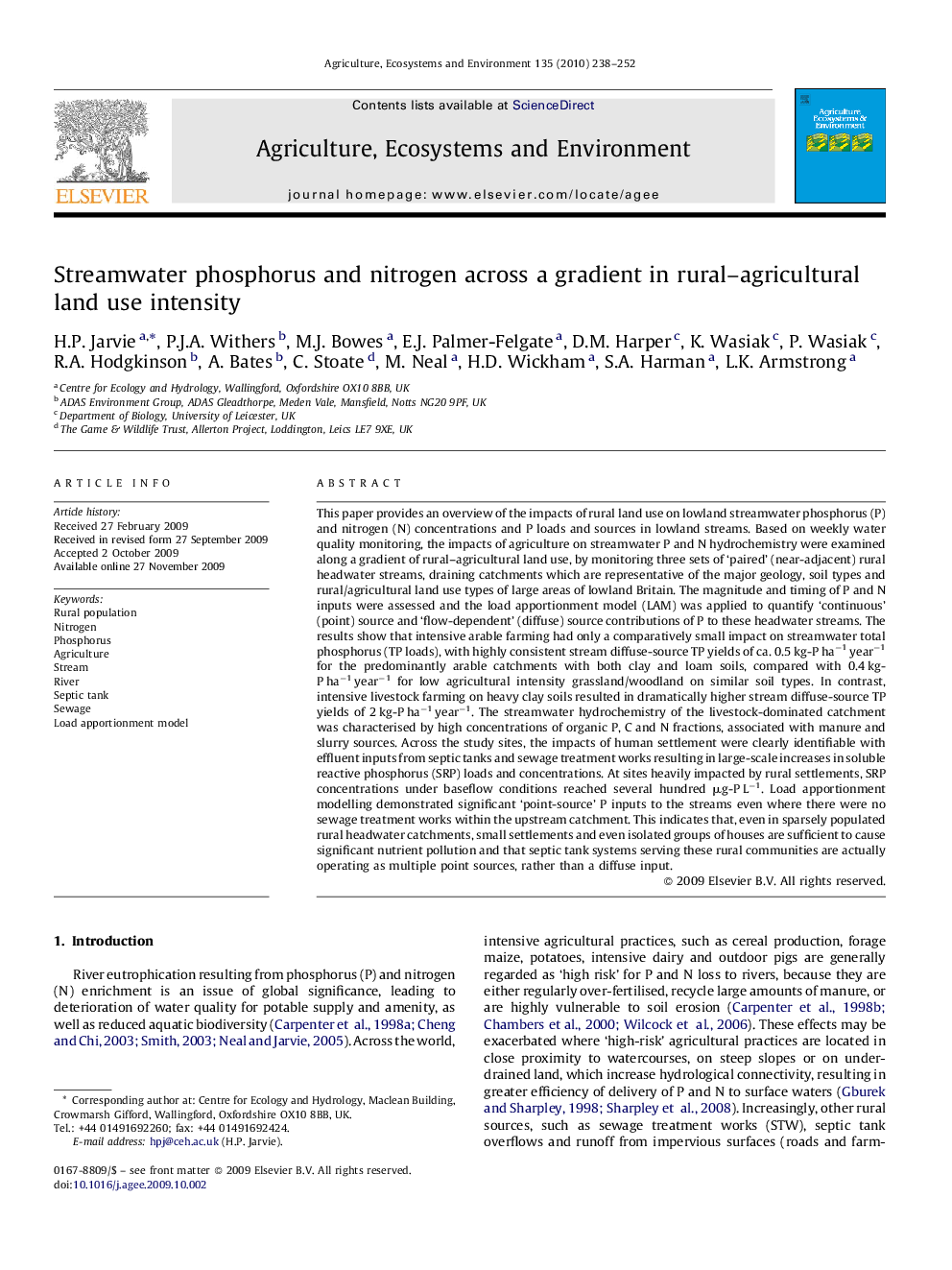| کد مقاله | کد نشریه | سال انتشار | مقاله انگلیسی | نسخه تمام متن |
|---|---|---|---|---|
| 2415071 | 1103945 | 2010 | 15 صفحه PDF | دانلود رایگان |

This paper provides an overview of the impacts of rural land use on lowland streamwater phosphorus (P) and nitrogen (N) concentrations and P loads and sources in lowland streams. Based on weekly water quality monitoring, the impacts of agriculture on streamwater P and N hydrochemistry were examined along a gradient of rural–agricultural land use, by monitoring three sets of ‘paired’ (near-adjacent) rural headwater streams, draining catchments which are representative of the major geology, soil types and rural/agricultural land use types of large areas of lowland Britain. The magnitude and timing of P and N inputs were assessed and the load apportionment model (LAM) was applied to quantify ‘continuous’ (point) source and ‘flow-dependent’ (diffuse) source contributions of P to these headwater streams. The results show that intensive arable farming had only a comparatively small impact on streamwater total phosphorus (TP loads), with highly consistent stream diffuse-source TP yields of ca. 0.5 kg-P ha−1 year−1 for the predominantly arable catchments with both clay and loam soils, compared with 0.4 kg-P ha−1 year−1 for low agricultural intensity grassland/woodland on similar soil types. In contrast, intensive livestock farming on heavy clay soils resulted in dramatically higher stream diffuse-source TP yields of 2 kg-P ha−1 year−1. The streamwater hydrochemistry of the livestock-dominated catchment was characterised by high concentrations of organic P, C and N fractions, associated with manure and slurry sources. Across the study sites, the impacts of human settlement were clearly identifiable with effluent inputs from septic tanks and sewage treatment works resulting in large-scale increases in soluble reactive phosphorus (SRP) loads and concentrations. At sites heavily impacted by rural settlements, SRP concentrations under baseflow conditions reached several hundred μg-P L−1. Load apportionment modelling demonstrated significant ‘point-source’ P inputs to the streams even where there were no sewage treatment works within the upstream catchment. This indicates that, even in sparsely populated rural headwater catchments, small settlements and even isolated groups of houses are sufficient to cause significant nutrient pollution and that septic tank systems serving these rural communities are actually operating as multiple point sources, rather than a diffuse input.
Journal: Agriculture, Ecosystems & Environment - Volume 135, Issue 4, 1 February 2010, Pages 238–252